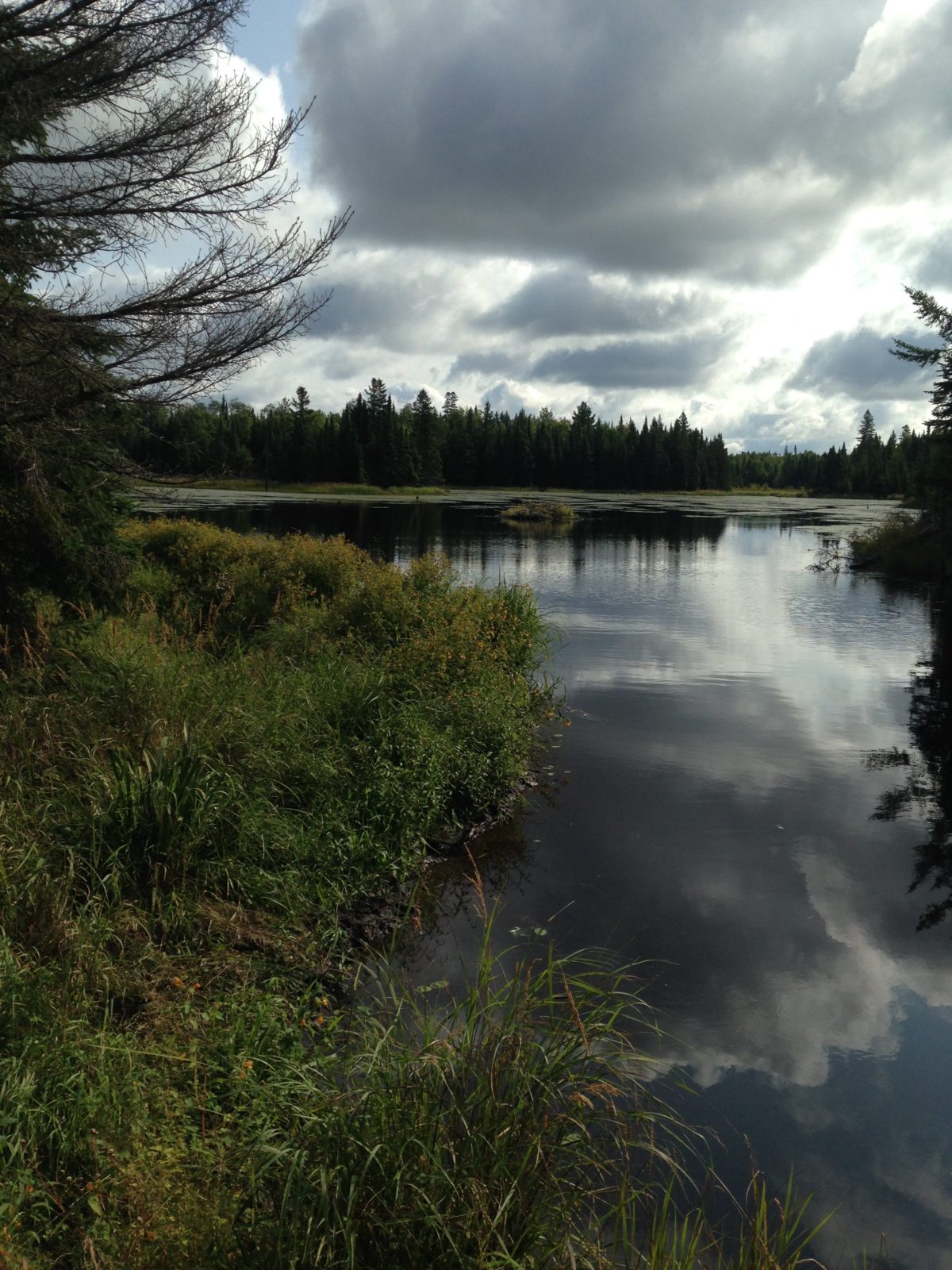National Park Units in the Superbowl State
As we plan to gather with family and friends in front of our televisions this coming weekend to watch the Superbowl festivities in Minnesota, it reminded us of how wonderful the state is and how much we enjoyed visiting the national park units there. Minnesota has four national park units to visit.
Minnesota National Park Units
Diverse Types
Each of these parks represents and preserves something very different:
- Grand Portage is all about the history of the fur trade.
- The Mississippi River played a huge part in commerce and still does, as well as being one of America’s great playgrounds.
- Pipestone is all about Native American traditions.
- Voyageurs is nature at its best.
Grand Portage National Monument
Located on the west end of Lake Superior, Grand Portage was the summer headquarters for the Northwest Company from 1784 to 1803. Each year it hosted “rendevous” – a gathering of Indians, fur traders and voyageurs.
Voyageurs had paddled 16-man canoes all the way from Montreal carrying trade goods.
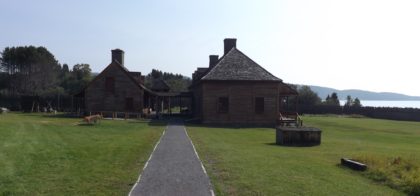
Fur traders had hiked from the interior northwest carrying two 90 pound packs along the 8 1/2 mile portage (the “Grand Portage”) from Fort Charlotte to Lake Superior. These packs were filled with the pelts they had collected over the winter.
At Grand Portage the fur traders sold their pelts to the Northwest Company in return for supplies and trade goods they would use the following winter. The trade goods brought by the Voyageurs included things like glass beads, blankets, kettles, firearms, axes, traps and unfortunately, distilled spirits.
The film is a little cheesy, but it is pretty incredible how the Voyageurs travelled and the re-enactors at the village were actually really interesting. Plan to spend a few hours there and make sure you enjoy some of the hikes nearby.
Mississippi River National River and Recreation Area
The source of the mighty Mississippi is in northern Minnesota, at Lake Itasca. From there it flows 2,348 miles to the Gulf of Mexico, second in length only to the Missouri river in the United States. The National Park Service designates National Recreation Areas to preserve places with significant historic resources that are also important natural areas. Especially in urban areas like Minneapolis, these national park units provide outdoor recreation and unspoiled beauty.
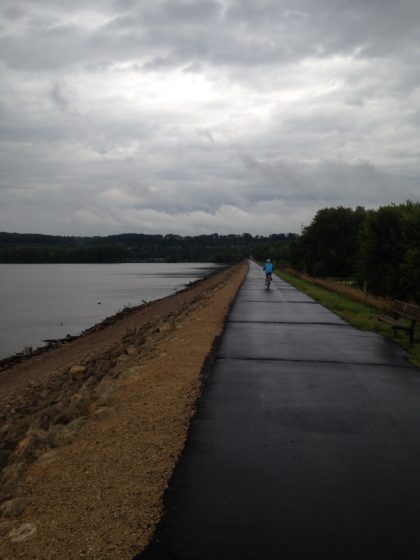 Here people can enjoy the outdoors summer or winter. On the water, you can canoe, boat, fish or ice-fish. On the banks, there are paths where you can bike, walk, run or snowshoe. We saw bald eagles and deer as we enjoyed the cycling along the river.
Here people can enjoy the outdoors summer or winter. On the water, you can canoe, boat, fish or ice-fish. On the banks, there are paths where you can bike, walk, run or snowshoe. We saw bald eagles and deer as we enjoyed the cycling along the river.
Unlike other parks, the National Park Service owns very little of this area – only 67 acres of the designated 54,000 acres. The park is operated in partnership with city, regional and state parks, plus a National Wildlife Refuge and private properties along the banks. Residents of the Minneapolis area as well as visitors can derive hours of enjoyment here.
Pipestone National Monument
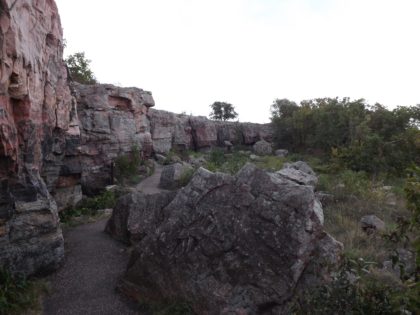
Established in 1937, Pipestone National Monument protects natural prairie resources and preserves the history of Indian quarrying and pipe-making. This has been an active quarry for centuries and remains active to this day.
During the 22 minute film at the visitor center, you will learn about the evolution of the pipe and it’s influence and it’s place in the history of native Americans, settlers and traders. You can also see live demonstrations of pipe-making and quarrying.
As hikers, we enjoyed the hikes at the national monument through the tall grass prairie, on the cliffs to the quarry, and creekside to a waterfall. Along with the history of the place, there is also a wide diversity of nature. Plan a couple of hours to take this all in and to enjoy the peacefulness of place.
Voyageurs National Park
Named after the French Canadian “Voyageurs”, this is a water-based park. Although there are a couple of visitor centers and a few hikes along the shores, the only real way to experience the magnitude of this park is to get out on the water. There are:
- over 500 islands, many with bald eagle nests
- 655 miles of shoreline
- 218,000 acres of land and water
- 240 boat-in campsites
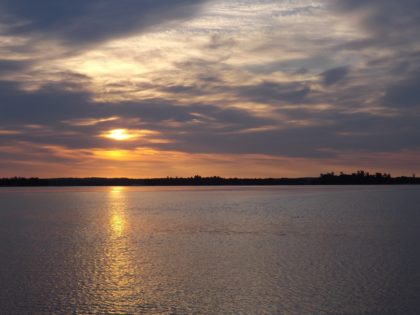 Our favorite activity was Locator Lake. The Kabetogama Lake Visitor Center will rent you a canoe. You don’t get it there. They give you a key to the lock. From there you have to boat across the lake to the dock and hike two miles to the next lake. There you will unlock your canoe and paddle on remote lakes, inaccessible by anything motorized (at least in the summer).
Our favorite activity was Locator Lake. The Kabetogama Lake Visitor Center will rent you a canoe. You don’t get it there. They give you a key to the lock. From there you have to boat across the lake to the dock and hike two miles to the next lake. There you will unlock your canoe and paddle on remote lakes, inaccessible by anything motorized (at least in the summer).
We were the only ones on the lake. It was absolutely gorgeous. We saw beaver dens, otters, loons and more birds than we could identify. The fishing was amazing! Virtually every cast brought up a fish. (We did catch and release.)
This park is open year round. In winter, you can drive your car on the lake’s ice roads and go anywhere on a snowmobile. There are hundreds of miles of trails. You can also rent snowshoes and cross country skis at the Rainy Lake Visitor Centre.
This is one of the more remote parks in the United States, but one of the most beautiful and unspoiled.

